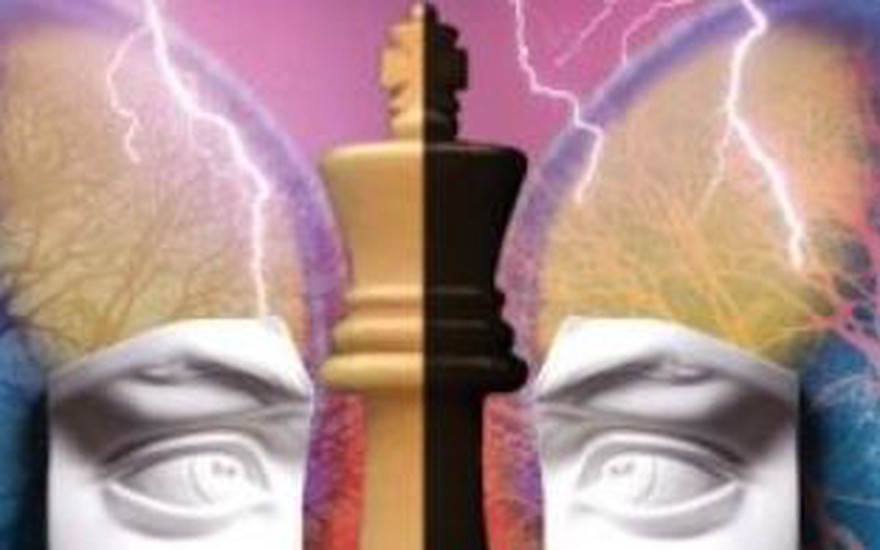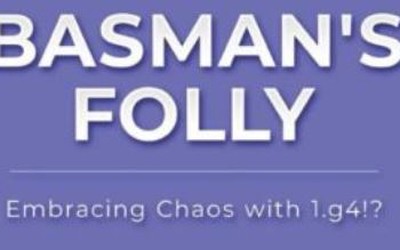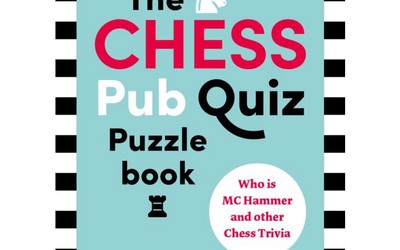
Review: Some instructional and training works
Review by FM James Vigus of recent training/calculation booksBooks reviewed:
- Boris Zlotnik, Zlotnik's Treasure Trove
- Davorin Kuljasevic, The How to Study Chess on Your Own Workbook. Volume 1
- Joel Benjamin, Chessboard Combat
- Konstantin Chernyshov, Cognitive Chess
- (R.B. Ramesh, Improve Your Chess Calculation)
Zlotnik's Treasure Trove: Enjoyable Chess Training for Amateurs (1600-2200 Elo)
By Boris Zlotnik
New in Chess, 2023
Paperback, 248 pages
Introduction
The Russian IM Boris Zlotnik, long resident in Spain, enjoys considerable kudos as Fabiano Caruana's former trainer. His previous book for New in Chess, Zlotnik's Middlegame Manual (2020), was well received.
This new book tackles a wide range of topics, mixing practical advice with more general or philosophical reflections, providing examples from both professional and amateur play, and including a diverse set of puzzles. The contents are as follows:
7 Preface
11 Ch. 1) Professionals and amateurs
24 Ch. 2) Factors which determine success in chess
44 Ch. 3) Training in tactical play
76 Ch. 4) Training in positional play
106 Ch. 5) Creativity in chess
129 Ch. 6) Maximum resistance in practical situations
162 Ch. 7) Studying the opening
184 Ch. 8) Studying the endgame
205 Ch. 9) Solutions to exercises
243 Index of names
247 Bibliography
248 Explanation of symbols
Candidate moves
In chapter 3, Zlotnik presents an excellent section on calculating variations and candidate moves. Conceptually this takes the form of an update of Alexander Kotov's classic model in Think Like a Grandmaster. We learn by the way that Zlotnik edited the Russian 'second edition' of that book, and that he prefers Kotov's earlier version, published in 1970, which is unknown to non-Russian readers.
Kotov's method was to determine all candidate moves before starting to calculate. Each variation should then be calculated only once. Zlotnik points out that in a complex position it may be impossible to determine all candidates without any calculation. Further, calculating a near-miss may lead us to try the same idea with a different first move. I loved this illustration, especially as I fell headlong into the trap myself: (White to play at move 21)
That was an example of what Kotov termed a 'trunk' - a relatively long line without significant deviations along the way, which reflects the presence of one dominant idea. Zlotnik also shows nice examples of a 'thicket' - many shorter variations, which makes for a higher level of difficulty - and a 'jungle', in which the variations are so complex that intuition plays a crucial role. At the end of this chapter there is a good calculation exercise: we play through the game Kramnik-Topalov, Skopje 2015, answering tactical questions as we go.
Further highlights, for me, include the section on GM Konstantin Chernyshov's games in chapter 5 ('Creativity'). Elsewhere, there is also some good material, but it comes very much in 'treasure trove' format rather than unfolding in any systematic fashion. For example, chapter 7 ('Studying the Opening') concludes a little randomly with a brief discussion of two books on the Accelerated Dragon, without entering into much depth.
More annoyingly, to this reader, the book takes time to warm up: the first two chapters contain a hotch-potch of the author's opinions about chess, and even some self-congratulation on his chess coaching of successful businessmen. A firmer editorial hand might have trimmed this undoubtedly stimulating and interesting book into something much leaner and more focused.
The How to Study Chess on Your Own Workbook. Volume 1: Exercises and Training for Club Players (1800-2100 Elo)
By Davorin Kuljasevic
New in Chess, 2022
Paperback, 220 pages
The aims of this book overlap with those of Zlotnik's Treasure Trove. However, GM Kuljasevic's work is entirely devoted to exercises. It stands alone, but it is also the practical sequel to Kujasevic's brilliant work How to Study Chess on Your Own. The only significant limitation of the latter volume was that not all the recommendations may feel practical for amateur players with very limited time; but such players should gain a great deal from the new Workbook.
Contents:
6 Symbols
7 Preface
9 Chapter 1: How to use the Workbook
11 Find a Hidden Tactic
14 Find a Mini-plan
18 Analysis
22 Simulation
31 Endgame Training Positions
36 Chapter 2: Visualization Bootcamp
41 Exercises
45 Solutions
50 Chapter 3: Tactics Training
56 Tactics Training Set 1-5
66 Solutions
85 Chapter 4 Middlegame Training
87 Middlegame Training (Sets 1 to 5)
158 Chapter 5 Endgame Training (sets 1-5)
188 Solutions
219 Index of names
Kuljasevic's selections put into practice exactly what he suggested in the theoretical book. There are a number of 'simulations' - his term for the 'How Good is Your Chess' type feature that Daniel King publishes every month in the UK magazine CHESS Monthly, in which the reader lowers a piece of card down the page to guess each move by the winner and gains points based on the calculations accomplished. 'Visualization' exercises also feature heavily: here we follow a series of moves from a diagram and find a 'hidden' tactic somewhere in the sequence.
Successive chapters cover tactics training, middlegame training, and endgame training. All are thoroughly excellent, and can be recommended even to players above the 2100 upper threshold suggested by the author. Kuljasevic is a courteous and considerate trainer, gently warning us when things are about to get difficult. Indeed, the difficulty level is carefully curated, with the tactics training moving from 'appetizers', through 'confidence builders', 'breaking a sweat' and 'going the distance' to 'the ultimate challenge'. The explanations are admirably concise, clear and instructive.
I already thought very highly of Kuljasevic's work, and this is once again of top quality - a superbly practical book for ambitious club players.
Chessboard Combat: The Give and Take of Chess Tactics
By Joel Benjamin
New in Chess, 2023
Paperback, 224 pages
This book of annotated games, too, contains puzzles - 78 of them, placed at the start of each chapter so that we can try out some of the key calculation tasks before reading on. Each solution within the text of a respective game is headed as such, so that the reader has another chance to attempt the puzzle before reading on. However, this is not primarily a self-testing book. Rather, the focus is on introducing the reader to the messy reality of tactical chess, which does not always follow the patterns indicated by textbooks. Benjamin explains in the introduction: 'The largest chapter I have dubbed "Strike, Counterstrike". That term encapsulates the fundamental principle of the book, the two-way nature of tactics in chess. From there the games are grouped according to theme and situation. Negotiating tactics in special circumstances like having a difficult position or having the possibility of a draw require their own set of practical ideas.' Benjamin's annotations are readable and practical, using engine analysis but prioritising human understanding. Although he has reused many of his own ICC game of the week selections, the tactically exciting games in this anthology were almost entirely unknown to me, and I enjoyed them very much.
Contents:
6 Explanation of symbols
7 Introduction
10 Acknowledgements
11 Chapter 1) Strike, Counterstrike
76 Chapter 2) The King Is a Fighting Piece
111 Chapter 3) Dodging Defenses
120 Chapter 4) Staying Alive
154 Chapter 5) Trying Too Hard to Win
163 Chapter 6) Back Rank Tactics
174 Chapter 7) In the Beginning... and in the End
190 Chapter 8) Whoops!
217 Chapter 9) Tactical Tips
221 Index of names
224 Sources
Cognitive Chess: Improving Visualization and Calculation Skills
By Konstantin Chernyshov
Russell Enterprises, 2021
Paperback, 312 pages
Any reader who benefits from the visualization exercises mentioned above (in the Kuljasevic review) can find abundant further material here. The emphasis is on getting familiar with chess in one's head, and ultimately calculating without needing to move the pieces around on a board.
The Introduction is fairly minimal. (It contains one awkwardly sexist metaphor - but then we're straight onto the chess.)
First, at Level 1, we're asked to play through short sequences from the starting position in our head, and to name the colour of certain squares without looking, and so on. Next, we're given a diagram from early in a game and asked to reconstruct how the game arrived at that point.
Level 2 involves solving simple endgame positions without a diagram, just from being told which pieces are on which squares; as well as slightly longer tactical opening sequences.
Then we are given a sequence of diagrams for a game and have to fill in the moves between each one. Spaces are provided to pencil in our answers.
That is the basic menu of exercises. As the level increases (at level 3 it's becoming very challenging for me, a rusty 2300-rated player), more diagrams appear to assist the initial visualization.
As noted above, GM Chernyshov is a wonderfully creative player. He uses many of his own games for the exercises, and these glimpses into his practice are valuable.
With small type and (when diagrams are present) six diagrams on a page, this book packs in a vast number of exercises. The demanding content and relatively austere style of presentation mean that this may not be a very popular book. Nevertheless, trying even a few exercises per week from it will surely be beneficial to the reader. And there are some sparkling miniatures and instructive endgames to enjoy along the way. This is an original and definitely worthwhile work.
Improve Your Chess Calculation
By R. B. Ramesh
New in Chess, 2022
Paperback, 336 pages
This awe-inspiring, award-winning book deserves to be mentioned here. It is by far the most challenging of all the works under review. In fact I've been planning to review it for a long time - but the exercises are so difficult that to test a reasonable sample and comment meaningfully on GM Ramesh's method remains a work in progress for me. Please watch this space...
More blog posts by Minckwitz

Review: The Perfect Pirc-Modern by Viktor Moskalenko
This is a review by FM James Vigus of Moskalenko's The Perfect Pirc-Modern
Review: Basman's Folly (1 g4) by Lakdawala and Hansen
Review by FM James Vigus of Lakdawala & Hansen's book on the Grob
Review: The Hungarian Dragon by Junior Tay
A review by FM James Vigus of Junior Tay's 'The Hungarian Dragon'